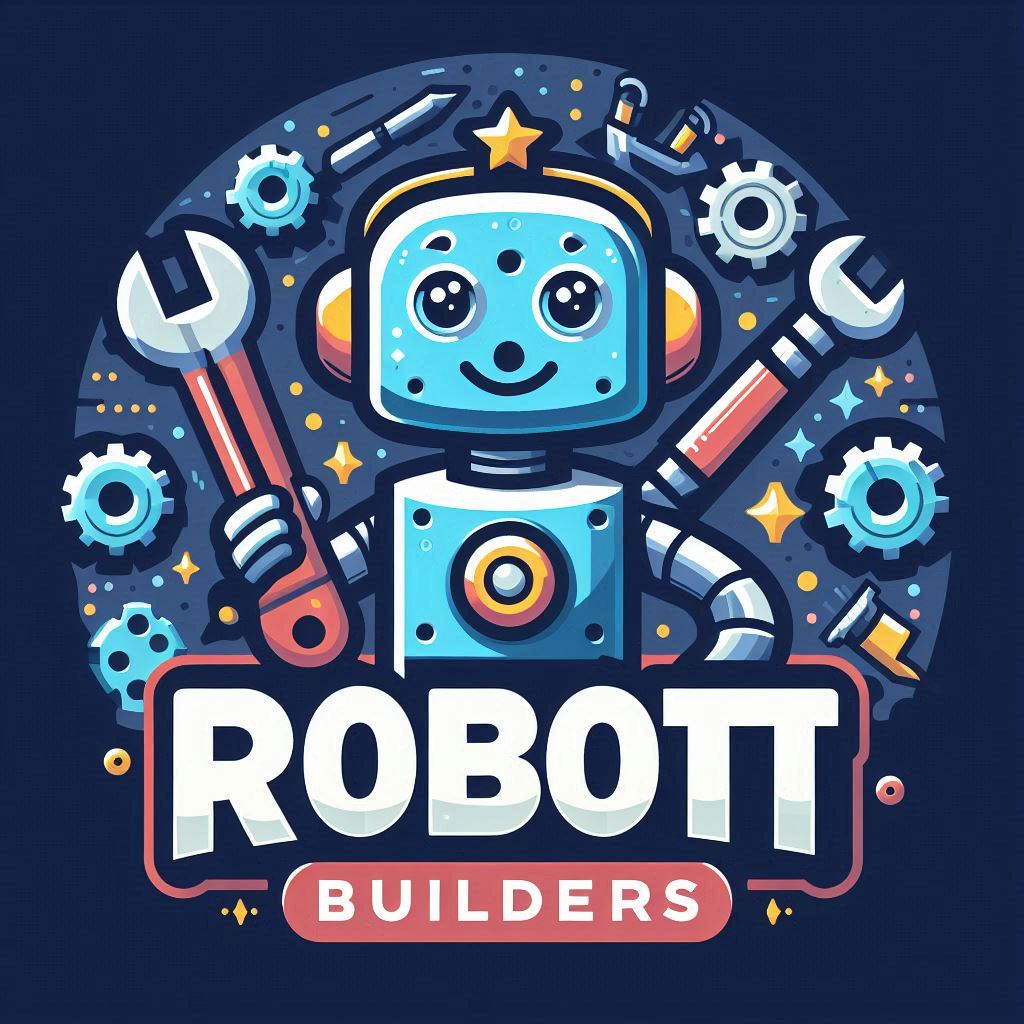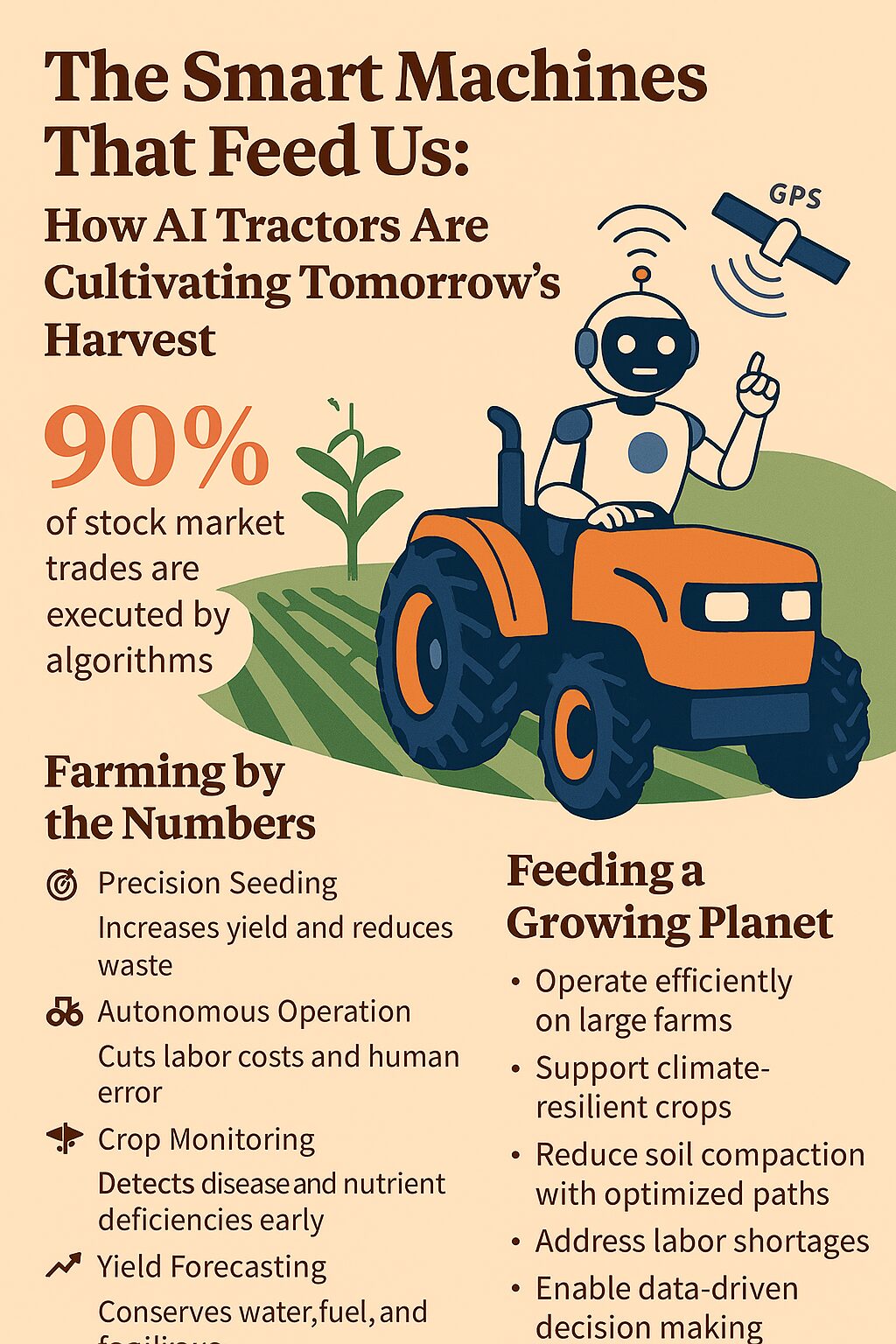Introduction
As global food demand surges and labor shortages intensify, agriculture is undergoing a technological revolution. In 2025, AI-powered autonomous tractors are no longer experimental—they’re essential. These intelligent machines are reshaping farming by increasing productivity, reducing costs, and enabling precision agriculture at scale.
This article explores how AI is revolutionizing farming, the rise of autonomous tractors, and what it means for the future of food security.
🤖 What Are Autonomous Tractors?
Autonomous tractors are self-driving agricultural machines equipped with:
- GPS and LiDAR for navigation
- Computer vision for obstacle detection
- Machine learning for decision-making
- IoT sensors for real-time data collection
- Cloud connectivity for remote operation
These tractors can plow, seed, fertilize, and harvest crops with minimal human intervention—often controlled via smartphone apps.
📊 How AI Is Transforming Agriculture
| AI Capability | Farming Impact |
|---|---|
| 🧠 Precision Farming | Optimizes seed placement, irrigation, and fertilization |
| 🚜 Autonomous Operation | Reduces labor dependency and human error |
| 🌾 Crop Monitoring | Uses drones and sensors to detect disease and nutrient deficiencies |
| 📈 Yield Prediction | Forecasts harvest outcomes using historical and real-time data |
| 🔄 Resource Optimization | Minimizes fuel, water, and chemical usage |
AI enables farmers to make data-driven decisions, improving both efficiency and sustainability.
🌍 Feeding the World with Fewer Resources
With the global population projected to reach 9.7 billion by 2050, food production must increase by 70%. AI-powered tractors help meet this challenge by:
- Operating 24/7 in extreme conditions
- Reducing soil compaction through optimized path planning
- Enhancing productivity on large-scale farms
- Addressing labor shortages in rural regions
- Supporting climate-resilient farming practices
Companies like John Deere and Monarch Tractor are leading the charge with electric, autonomous fleets that can be managed remotely.
💡 Benefits of AI-Driven Farming
| Benefit | Description |
|---|---|
| ⏱️ Time Efficiency | Tractors operate continuously without fatigue |
| 💰 Cost Reduction | Cuts labor and fuel expenses |
| 🌱 Sustainability | Reduces chemical runoff and soil degradation |
| 📊 Data-Driven Decisions | Real-time insights improve crop management |
| 🧑🌾 Farmer Empowerment | Frees farmers to focus on strategy and innovation |
AI doesn’t replace farmers—it empowers them.
⚠️ Challenges and Ethical Considerations
Despite its promise, AI farming raises important questions:
- 🔐 Data Privacy: Who owns the data collected by autonomous machines?
- ⚖️ Access Inequality: Will small-scale farmers be left behind?
- 🧠 Overreliance on Automation: Could tech failures disrupt food supply chains?
- 🌍 Environmental Impact: How sustainable are the materials and energy sources?
Policymakers and innovators must ensure ethical deployment and inclusive access.
🔍 SEO Tips for AgriTech Content Creators
✅ High-Impact Keywords
- “AI in farming 2025”
- “autonomous tractors agriculture”
- “precision agriculture technology”
- “robotic farm equipment”
✅ Metadata Optimization
- Meta Title: “AI in Farming: Autonomous Tractors Feed the World”
- Meta Description: “Explore how AI-powered autonomous tractors are revolutionizing agriculture and helping feed the world in 2025.”
✅ Structured Formatting
- Use headings, tables, and bullet points for readability
- Include alt text for visuals (e.g., “AI tractor navigating crop field with GPS guidance”)
Conclusion
AI in farming is more than a technological upgrade—it’s a global solution. Autonomous tractors are helping feed the world by making agriculture smarter, faster, and more sustainable. As innovation accelerates, the future of farming will be defined not just by machines, but by the intelligence behind them.

